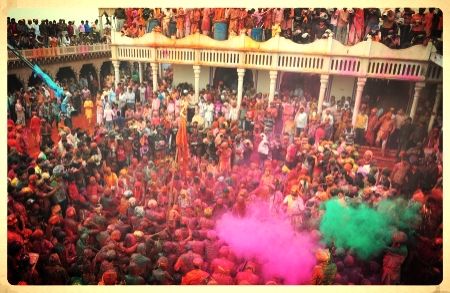Holi - a bucketlist
One day, just too many things right now.


Holi is an important festival to Hindus. It is celebrated at the end of the winter season on the last full moon day of the lunar month Phalguna (February/March), (Phalgun Purnima), which usually falls in March, sometimes in late February.[23] The festival has many purposes. First and foremost, it celebrates the beginning of the new season, spring. In 17th century literature, it was identified as a festival that celebrated agriculture, commemorated good spring harvests and the fertile land.[7] Hindus believe it is a time of enjoying spring's abundant colours and saying farewell to winter. Holi festivities mark the beginning of new year to many Hindus, as well as a justification to reset and renew ruptured relationships, end conflicts and accumulated emotional impurities from past.[13][22] It also has a religious purpose, symbolically signified by the legend of Holika. The night before Holi, bonfires are lit, known as Holika Dahan (burning of Holika) or Little Holi. People gather near fires, dance and sing. The next day, Holi, also known as Dhuli in Sanskrit, or Dhulheti, Dhulandi or Dhulendi, is celebrated. Children and youth spray coloured powder solutions (Gulal) at each other, laugh and celebrate, while elders tend to smear dry coloured powder (Abir) on each other's face.[1][22] Visitors to homes are first teased with colours, then served with Holi delicacies, desserts and drinks.[24] After playing with colours, and bathing, people put on clean clothes, and visit friends and family.[13] - WikipediaImage credit: http://www.tierraindia.in
Comments